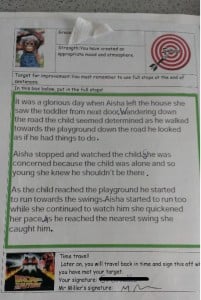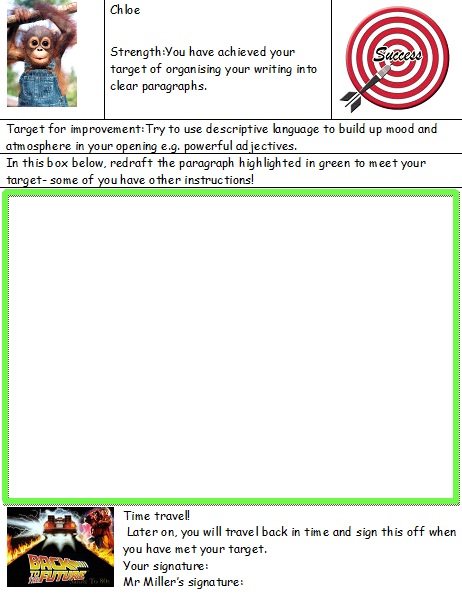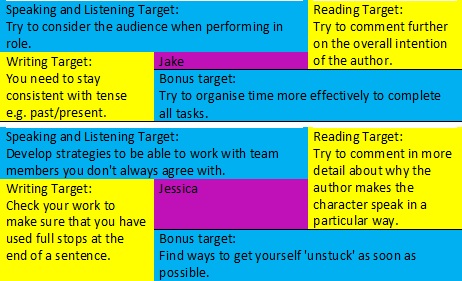I write this post as much as a reminder to myself after a few challenging lessons as it is advice to others.
There is nothing low level about lessons where you cannot talk without interruption and low level disruption is one of the most harmful things in our schools. When you have that class, you can feel completely overwhelmed and no matter what you try, nothing seems to work. You receive advice like ‘plan well and behaviour takes care of itself’ but that isn’t a helpful comment to hear when you are a hard working professional, especially if the implication is ‘plan fun lessons and they will behave’. There are all sorts of effective behaviour management strategies to de-escalate- and I swear by some- but they mainly work on individual students and are no use if the class just won’t listen.
Some things are not under your control: the state of mind students are in when they arrive in the classroom, school behaviour systems, the time of the day etc. You need to take comfort in the fact that there are some things that are very much under your control. Focusing on these things will help you improve the climate in your classroom and will allow you to remain calm, knowing that the behaviour will improve.
The seating plan
You decide where students sit. The simple act of placing students in a seating plan indicates that you are in charge. The symbolic aspect is important, but there are obviously far more benefits.
Most low level disruption is caused by chatter or students looking at each other. You should identify combinations that you don’t want and separate those students. Place them as far away from each other as you can possibly get away with. Even when they are far apart, check for eye-lines. Sit down in your classroom and identify where your ‘blind spots’ are. I have computers in my room which help me to block students off but which also create blind spots I need to be aware of. Surround your most challenging student with positive peers. Do whatever you can and insist students follow it.
You should see a seating plan as a constant work in progress. If it doesn’t work, change it. Swap students around. If you feel at any point it needs changing, then change it. Students complain and will always try to sit where they want to. Be resolute and insistent- it doesn’t mean that you can’t move someone if they speak to you at an appropriate moment and explain a situation you were not aware of e.g. a previous incident of bullying.
The phone call home
I have learnt that 99% of parents are incredibly supportive. They want exactly the same thing for their son/ daughter as you do. A phone call and a quick conversation can often be the only thing that is needed to keep them on track.
You can find out things that help too. Once, I had a challenging student who I could barely get into the classroom. I found out from his mother that he wanted to be a zookeeper and from the moment that I talked about animals with him, he was a model student.
Changing the atmosphere of a class isn’t just about phoning the parents of the students who display the worst behaviour. You should make positive calls to the students who are doing the right things. You do this because they deserve it, because it’ll make you feel happier and because it will keep them on your side. There are a number of students who will get one or two warnings in your class but never a detention. Phone their parents too because they are ruining your lesson every time it happens.
If you are ever greeted with hostility, just keep the conversation about the specific behaviour displayed in the lesson. It isn’t an attack on the student, it isn’t a comment on them as a parent- it is a specific behaviour that is the problem. Don’t be defensive- you are making the call because you care. If you think that the conversation may be hostile, make it with your head of department present (or another more senior member of staff)and prepare responses to negative comments. For example, ‘What is he going to need R.E. for?’ or ‘She only misbehaves in Maths so it must be a personality clash.’
Remember that this all part of building teacher reputation. You want students to know that you will phone home. An initial flurry of calls home can have the required effect and you may never need to make a negative call again.
Feedback
Books don’t answer back. Writing doesn’t chew. You can give feedback to students without any arguments and you should place marking the books of your most challenging classes at the top of your list.
Obviously, when you have a challenging class, the conditions under which feedback is received may be difficult to manage. But when you are struggling to get the attention of the class, feedback in books sends the signal that they matter to you. Despite the behaviour that they have displayed, you will continue making them your priority. I find that most pupils appreciate this and slowly but surely they come on board.
When the books of your most challenging classes find their way to ther bottom of your to-do list, they can end up looking pretty awful: graffiti, dog ears, pages ripped out. Marking books means that you can get on top of these things. If you allow books to get this way, it is another subtle signal that basic expectations don’t matter.
I am not suggesting that there are not wider issues in play. Everyone in a school has a part to play and we do need to think carefully about our lessons and reflect on our own practice. We must de-escalate using language and movement and we must escalate using the behaviour system. But when those things are not having an effect, we need to keep fighting the battles that are ours to win.


